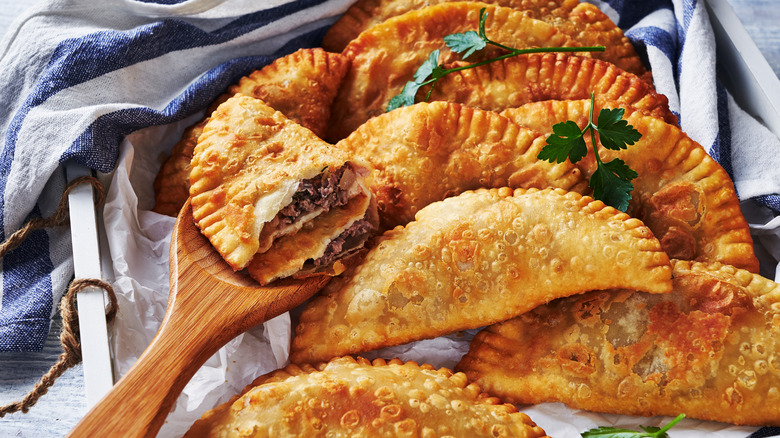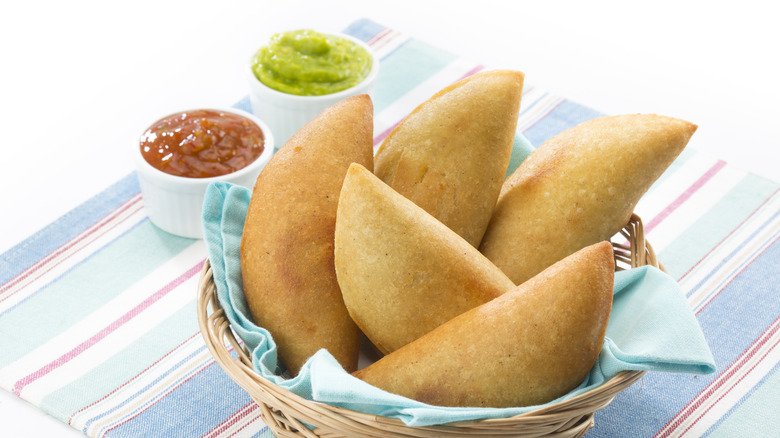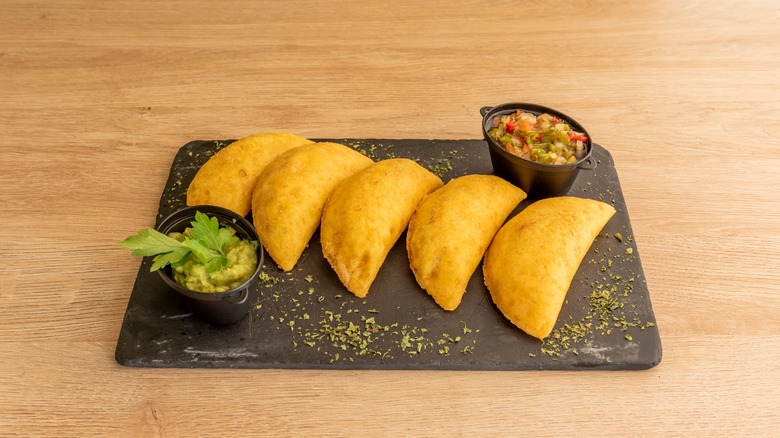The Ingredient That Sets Venezuelan Empanadas Apart
The appeal of empanadas is immediate — who doesn't like a tasty filling covered in a blanket of dough? A dish fusing global influences, the pastry first emerged in the Middle East. Then, Moors introduced it to Spain — specifically in the Galicia region — where it morphed into the empanada-preparation technique still popular today. From there, colonial expansion carried the creation to Latin America, the Caribbean, and the Philippines, where it took on even further local deviations.
In Venezuela, empanadas became a cornerstone of local gastronomy by the mid-19th century. Stuffed with components ranging from chicken to tuna, to beans and beef, they boast fillings inspired by neighboring countries. However, like arepas — the country's other renowned gastronomic creation — Venezuelan empanadas employ a corn-based dough. Such a distinct technique lends their empanadas a unique flavor and texture, not to mention making them gluten-free. So, what exactly is the corn flour employed for the job?
What is pre-cooked corn flour?
Venezuela empanadas reach for pre-cooked corn meal, utilizing either the white or yellow variety. The same base as arepas, it's vital the empanada's flour has gone through the extra processing step — normal corn meal won't work.
Also known as masarepa, this flour is produced through a process without nixtamalization. Instead of using lye, dried corn kernels are soaked, pounded, and then heated, all before being ground to completion. Such a process yields a finer flour that tastes starchier and has a distinct mouthfeel.
While some cooks continue to create the flour from scratch, industrialization has eased the process. Since this cornmeal variety is pre-cooked, it doesn't need a leavening agent — only mixing with water and salt makes it ready for use. So search for common brands like Harina PAN or Goya, verifying it's the pre-cooked variety by checking for the words "refinada precocida." Venezuelan empanadas won't be the same without such flour.
How are Venezualan empanadas made?
The preparation process starts with the pre-cooked cornmeal, which is mixed with hot water, salt, corn oil, and spices like ground annatto and turmeric. Some also add a small amount of cornstarch or flour for an altered texture. The mixture is kneaded by hand until it's not sticky but malleable. It's then rested for around 10 minutes.
Next, the dough is divided into spheres, smaller than a tennis ball. These morsels are flattened with a plate and plastic wrap. The filling is placed inside, utilizing only a tablespoon in the center so as not to burst the dough. The circles are folded over into a crescent shape and carefully pinched down around the edges. Traditionally, the empanadas are fried until golden brown; however, today, cooks also bake them or utilize an air fryer.
A wide variety of fillings are popular in Venezuela, often utilizing leftover stews and other ingredients on hand. Cumin and pepper stewed beef are especially popular, as are chicken, cheese, beans, and shark. Dependably well seasoned, the only requirement is that the filling isn't too liquidy. Instead, the cornmeal dough is the cornerstone. A corn preparation technique that's been around since pre-Columban times, such flour is quintessential to Venezuelan cooking — not to mention delicious.


